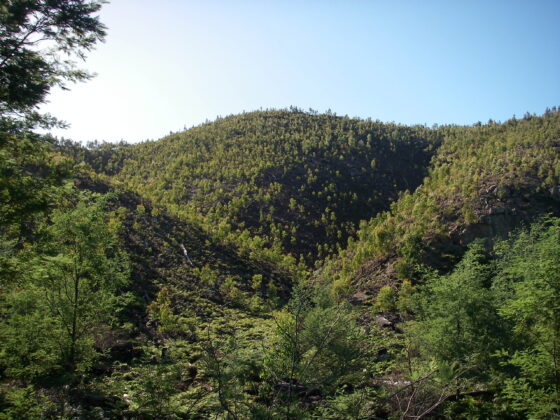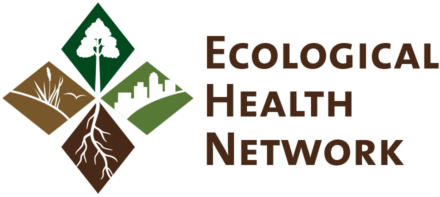North East Bioregional Network
Location
Tasmania, Australia
Category
Hub
Ecosystems
Mixed (focus area is a 280-km north-south transect)
Land Tenure
Public-Private
Contact
Todd Dudley
Website
The North East Bioregional Network (NEBN) is dedicated to protecting, maintaining, and restoring ecological integrity and resilience on the East Coast of Tasmania. NEBN works with public, private, and NGO partners, along with community groups and volunteers, to lead a variety of projects and initiatives.
Current NEBN Activities
NEBN has numerous projects currently underway, including the East Coast Conservation Corridor, protection of Future Potential Production Forests in secure Conservation Reserves, and a range of ecological restoration projects. Other areas of work include establishing a Green Job Guarantee program, incorporating biodiversity into Local Planning Schemes, and facilitating conservation covenants and Land for Wildlife registration on private land. In all of these efforts, NEBN is working with a variety of government agencies, private companies, and community groups to protect and enhance the region’s ecological values while also providing economic and social benefits for local communities.
Restore Skyline Tier

Restore Skyline Tier is NEBN’s largest ecological restoration project and flagship EcoHealth site. With a goal of restoring 2,000ha of radiata pine plantation back to biodiverse native forest, Skyline Tier is also among the largest ecological restoration projects in Tasmania. The plantation, established in the late 1960s, is situated west of the township of Scamander, 1-2 kms inland from the coast. Since July 2007, NEBN has been overseeing and implementing restoration of the plantation on several sites under a contractual agreement with the leaseholder New Forests. 700ha have been restored to date.
Restoration efforts have entailed: • extensive removal of pine wildings from regenerating areas, native forest and State Forest; • control of other weeds; • ecological burns; and • direct seeding with local native eucalypt species. Manual removal of pine wildings is the main form of post-pine plantation restorative action, as this allows the native regeneration to proceed with little competition from pines. Methods include hand pulling of small pines and cutting and painting with herbicide where necessary. Cutting of larger pines with hand saws and chainsaws has been possible with teams of volunteer labour from several local groups as well as with chainsaw contractors. The approach used at Skyline Tier is now also being used to restore other plantations back to native vegetation in Tasmania.
Below are typical Before and After conditions at two sites within the Skyline Tier region. The Before photos at left show conditions following harvesting and ecological burning of mature radiata pine plantation. The After photos at right were taken 7 years later and show natural regeneration of native forest including some direct seeding of local native eucalypts and follow-up weeding of remaining pine wildlings.




In 13 years, approximately 200 species of native plants have returned to restoration areas as a result of assisted natural regeneration treatments. The restoration works are protecting and enhancing significant biodiversity and conservation values, including:
⇒ habitat for six threatened flora species:
| Glycine latrobeana, clover glycine | Hibbertia calycina, lesser guinea flower |
| Heirochloe rariflora, cane holygrass | Caladenia filamentosa, daddy longlegs |
| Hovea corrickiae, glossy purplepea | Desmodium gunnii, southern ticktrefoil |
⇒ potential habitat for at least ten threatened animal species:
| Prototroctes mareana, Australian grayling | Tyto novaehollandiae castanops, masked owl |
| Antipodia chaostola, chaostola skipper | Dasyurus maculatus, spotted-tailed quoll |
| Tasmanipatus barretti, giant velvet worm | Dasyurus viverrinus, eastern quoll |
| Litoria raniformis, green and golden frog | Lathamus discolor, swift parrot |
| Pseudomys novae-hollandiae, New Holland mouse | Aquila audax fleayi, wedge-tailed eagle |
⇒ threatened vegetation communities:
| Black Gum (Eucalyptus ovata) forest (TASVEG code DOV) |
| Blue Gum (Eucalyptus globulus) forest (TASVEG code DGL) |
| Several high-conservation-value wetland communities (TASVEG code AWU) associated with the coastal and freshwater systems. |
⇒ habitat for non-threatened native plants and animals and vegetation communities
⇒ an important network of wetlands and riparian areas providing water quality benefits and conservation of aquatic habitat in streams that feed the coastal lagoons and estuaries
The project has employed about 80 local people since 2008, and there have been considerable economic and social benefits including improvements in mental and physical health amongst participants.
East Coast Conservation Corridor
The Skyline Tier Restoration Project is part of a larger, landscape-scale conservation initiative called the East Coast Conservation Corridor, also led by the North East Bioregional Network. The corridor extends 280 km north-south and encompasses 1,243,236ha, capturing major environmental gradients (e.g., elevation, latitude, distance from coast) and a wide variety of local climates and geological substrates with a consequent diversity of natural ecosystems. The initiative aims to connect, restore, and maintain the outstanding ecological values of Tasmania’s East Coast and North East by stitching together a number of smaller conservation initiatives already underway in the region, including Skyline Tier, and linking these with existing habitat nodes on public and private land requiring minimal management.

